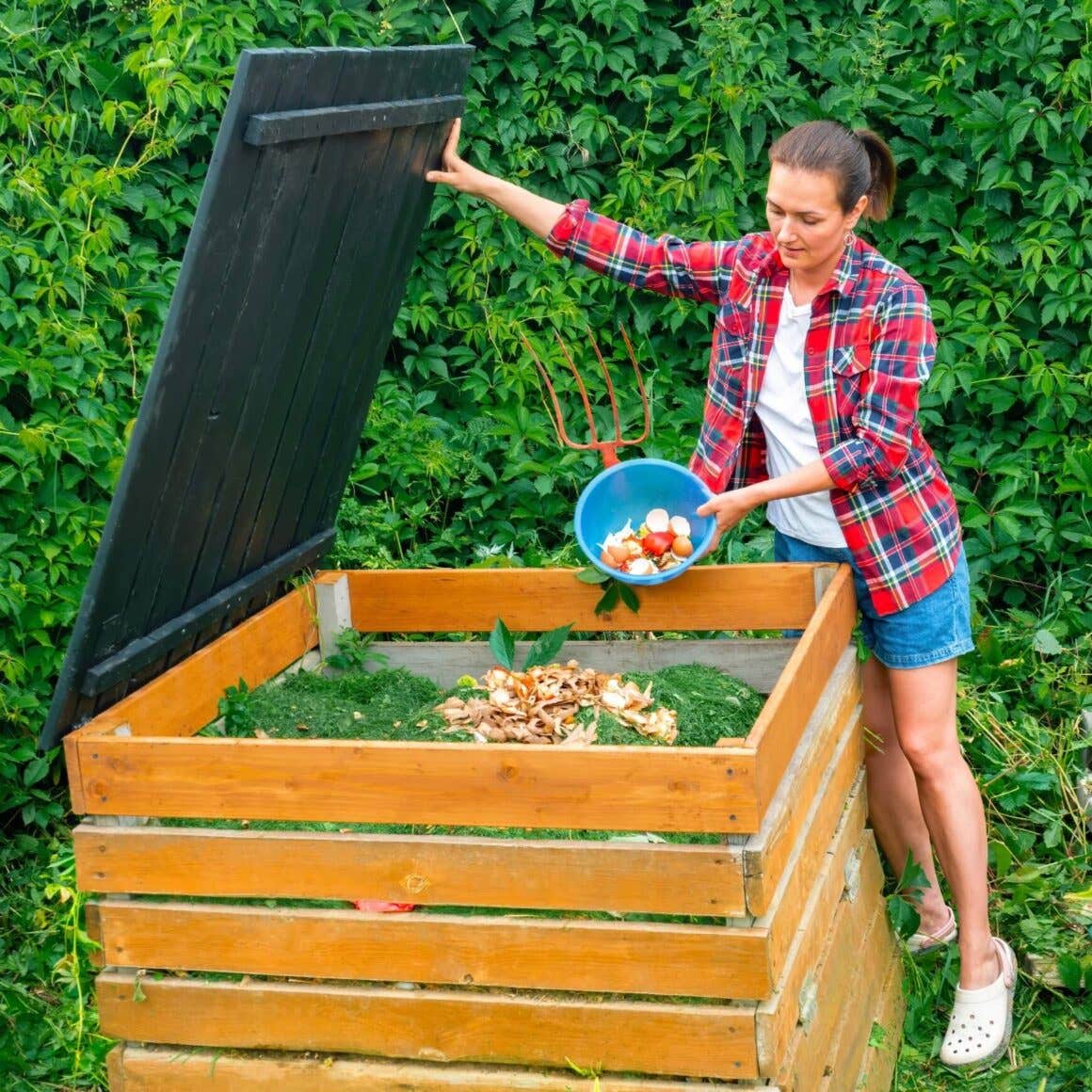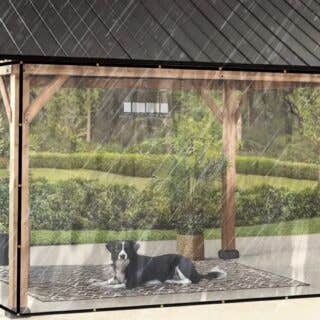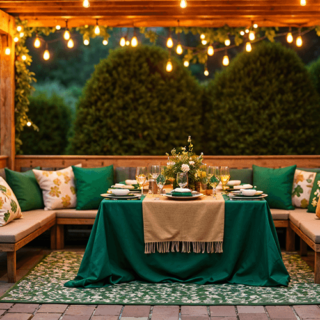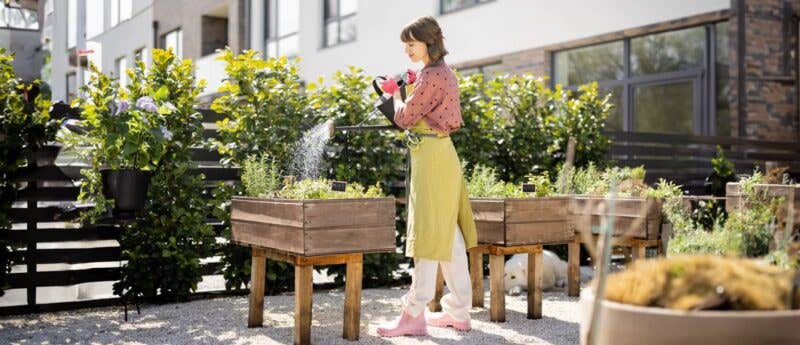Australia’s stunning landscapes and unique ecosystems offer a natural playground for outdoor enthusiasts. With World Environment Day upon us, there’s no better time to reflect on our actions that have impacted the environment and take crucial steps towards reducing our carbon footprint.
Since sustainability is the key, following an eco-friendly lifestyle can minimise environmental impact and preserve the splendour of our natural heritage for future generations. In this spirit, we have chalked out a guide to sustainable swaps that can transform your outdoor space into an eco-friendly haven. These greener alternatives promote a greener lifestyle while enhancing the beauty and functionality of your outdoor retreat.
1. Bio-Waste Bin: Turn Kitchen Scraps into Garden Gold
Composting is an excellent way to cut down on kitchen waste while giving your garden a nutrient boost. As a part of sustainable swaps for Environment Day, grab yourself a bio-waste bin for your kitchen and collect food scraps like fruit and vegetable peels, eggshells, and coffee grounds.
Once the bin is full, transfer the contents to an outdoor compost pile or your green bin, or drop it off at a local composting facility. This simple zero waste swap for a sustainable home not only reduces landfill waste but also gets you on track for a zero-waste lifestyle.

2. Pervious Paving: Optimise Water Absorption
Traditional concrete patios and driveways can be a real headache when it comes to water runoff and pollution. Why not switch to pervious paving materials, such as decomposed granite, pea gravel, or crushed stone?
These porous materials let water seep through, replenishing the soil, and reducing runoff. Plus, these eco-friendly swaps for the environment help mitigate environmental impact while minimising maintenance costs and decrease tripping hazards.
You can also go for decking made from recycled materials or FSC-certified timber. This eco-friendly choice aligns with your commitment to reducing environmental harm while enhancing the beauty and functionality of your outdoor space.
3. Harness Shade: Beat the Heat with Energy Efficiency
Strategically installing shade structures can significantly reduce your energy bills. By setting up pergolas, gazebos, or planting trees around your patio or backyard, you can create natural cooling systems that alleviate the need for excessive air conditioning. These sustainable swaps for an eco-friendly lifestyle make a substantial difference.
Consider using sun shade sails, or outdoor curtains to provide additional shade and comfort. Trees like oaks, maples, or birches, provide excellent shade in summer while allowing light to penetrate in the winter. This not only cuts down on energy costs but also enhances the comfort and appeal of your outdoor space.
4. LEDs & Solar Fixtures: Upgrade Landscape Lighting
Swapping out your old incandescent bulbs for energy-efficient LEDs and solar-powered fixtures makes a significant impact. Not only do they slash your energy use, but also cut down on light pollution.
Choose fixtures that direct light downward, minimising any disturbance to nocturnal wildlife. Additionally, consider adding motion sensors and timers to activate lights only when necessary. This simple swap not only conserves energy but also bolsters security around your outdoor space. Here are some popular options:
- Solar-Powered Path Lights: Perfect for illuminating pathways, driveways, or garden borders, these charge during the day and automatically turn on at night.
- LED Floodlights: Excellent for illuminating large outdoor areas like yards, parking lots or gardens, they offer energy-efficient lighting.
- LED Wall Sconces: Versatile fixtures mounted on exterior walls are functional for entryways, porches or outdoor spaces.
5. Rainwater Harvesting: Sustainable Water Solution
When it comes to trimming your utility bills, rainwater harvesting proves to be an effective solution. Simply attach collection barrels to your gutters or strategically place a few buckets when it rains to collect rainwater.
From irrigating plants and lawns to reducing reliance on potable water, you can use this collected water for multiple purposes. This simple practice ensures your garden stays lush and vibrant, even during dry spells, while simultaneously promoting water conservation.
6. Thrifted or Eco-Friendly Outdoor Furniture
Planning to update your outdoor furniture? Consider hitting up thrift stores or yard sales for some great finds. From sturdy tables to cosy chairs, you can score high-quality pieces that add character to your space at a fraction of the cost.
Alternatively, if you’re wishing to buy new furniture, go for sustainable materials such as reclaimed wood, recycled plastic, or bamboo. These options are a wonderful way to cut down on your carbon footprint while infusing your outdoor area with a unique, eco-friendly charm.
7. Vertical Garden: DIY Green Spaces with Recycled Pallets
Got a small garden space? Create a vertical garden using old pallets to make the most of it. It’s a clever way to save space while infusing greenery into your surroundings. Vertical gardens are not only practical but also a stylish addition to any garden or balcony.
Additionally, your old pallets also get a new lease of life. With a dash of creativity, you can turn waste into a beautiful and functional feature that enhances the aesthetic appeal of your outdoor area.
8. Bee-Friendly Gardening: Support Essential Pollinators
Bees are crucial for pollinating plants and maintaining healthy ecosystems. Ditch insecticides with neonicotinoids to support their survival. Plant bee-friendly flowers like lavender, rosemary, and sunflowers to create a bee-friendly garden.
Opting for sustainable swaps to protect the ocean, such as avoiding harmful chemicals, also supports marine life by reducing pollution runoff. Setting up a bee-friendly garden not only boosts biodiversity but also enhances the beauty and productivity of your outdoor space.
9. Eco-Friendly Fabrics: Revamp Your Outdoor Furniture
When selecting upholstery for your patio furniture, prioritise sustainable and eco-friendly materials. Look for options such as recycled polyester, organic cotton, hemp, or bamboo. These options are comfortable yet kinder to the planet.
These materials offer aesthetic appeal while significantly reducing the environmental impact. With fewer resources used and less waste generated during production, they contribute to a smaller environmental footprint compared to traditional synthetic fabrics.
Consider complementing your eco-friendly furniture choices with outdoor roller shades. They not only provide shade and privacy but also help prolong the lifespan of your patio furniture by shielding it from the harsh elements.
10. Modular & Multi-Functional Furniture: Sustainable & Cost Saver
Modular furniture emerges as a sustainability game changer. With versatile multi-functional furniture pieces like sectional sofas, storage ottomans and convertible alfresco dining tables, you can effortlessly customise the outdoor seating.
Modular furniture supports sustainability by promoting resource efficiency, extending product lifespans, and optimising space utilisation. Its versatility makes it a smart and eco-friendly choice for outdoor living environments.
This guide to eco-friendly swaps provides practical steps towards a more sustainable and eco-friendly lifestyle. Celebrate World Environment Day following these swaps and inspiring others to make a positive impact on the environment.







Recent Comments